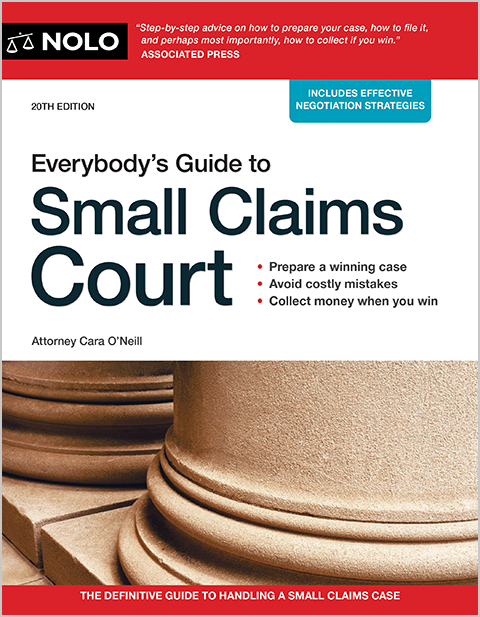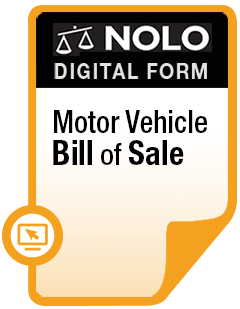If you get hurt as a rideshare passenger, your injuries will likely be covered by insurance, but whose policy applies?
Uber and Lyft offer riders a convenient way to get around. But these rideshare services also blur the line between personal and commercial driving, and raise questions around liability for car accidents. Here's what rideshare passengers need to know.
Report any Accident to Uber or Lyft
If you're involved in a crash while riding in an Uber or Lyft, you should take many of the same steps you'd take after any kind of car accident, plus one more.
Rideshare companies want drivers and riders to report any accident they've been involved in:
- Uber offers riders instructions on what to do after an Uber-related accident, and
- Lyft has a "report accident" portal.
A rideshare company representative may contact you for a statement about the accident. If you have questions or if you've been seriously injured, you might want to talk to a lawyer before discussing the accident with anyone.
Do Uber and Lyft Insure Their Passengers?
Uber and Lyft require drivers to carry personal car insurance, but the companies also provide coverage for drivers who are logged on to the apps (whether they already have a passenger in their vehicle, or they're simply available to customers.) We'll discuss the specifics of this coverage below.
Whose Insurance Will Cover a Rideshare Car Accident?
The first thing to know here is that just because you were injured in a rideshare accident, that doesn't mean Uber or Lyft (or the rideshare driver's) insurance will automatically cover your damages. Like most car accident claims, you have to show fault for the accident before you can get compensation for your losses.
If the Rideshare Driver Is at Fault for an Accident
If you were injured by a rideshare driver who was waiting for a ride request, Uber or Lyft will cover up to:
- $100,000 in bodily injury per accident (maximum $50,000 per person), and
- $25,000 for property damage.
If you were injured by a rideshare driver when the driver was picking up passengers or during a ride, Uber or Lyft provide up to $1 million in liability coverage. The companies might also offer uninsured/underinsured motorist insurance (UMI) in some states and comprehensive and collision insurance for drivers who maintain the coverage on their personal auto insurance.
If you were injured by a rideshare driver who isn't using the Uber or Lyft app at the time of the accident, you're limited to filing a claim with the driver's personal car insurance. A lawyer can subpoena electronic records to find out whether the driver had the app on or off at the time of the accident.
If a Non-Rideshare Driver Is at Fault for an Uber/Lyft Accident
The driver who is at fault for an accident is typically legally responsible (liable) for paying for accident-related losses. If you're a passenger in an Uber and you break your arm when a truck driver t-bones you, you can file a claim with the truck driver's insurance company, just as you would if the accident had happened when you were driving your own car.
The situation is more complicated when the at-fault driver is under/uninsured or when you're the victim of a hit-and-run. Some states require Uber and Lyft to provide coverage in these situations. Coverage limits vary from state to state.
Your Own Car Insurance Coverage Might Apply
If you have car insurance, especially if it's "personal injury protection" (PIP) or "medical payments" (MedPay) coverage, you might want to make a claim with your own insurer if you're injured in an Uber/Lyft accident. PIP and MedPay offer a quick way to get your accident-related medical bills paid as they come in. Your insurance company will likely end up seeking reimbursement from the insurer of whoever ends up being at fault for the crash.
Learn more about fault and liability for car accidents.
Can I Sue Uber or Lyft for a Car Accident?
If you've been injured in a rideshare accident, you're probably wondering if you can file a personal injury lawsuit against Uber or Lyft. Rideshare companies, after all, almost certainly have more assets than a typical rideshare driver.
Suing a Rideshare Company Can Be Complicated
Suing Uber or Lyft directly can be challenging. Both classify rideshare drivers as independent contractors, not employees. Companies are more likely to be held legally responsible for the negligence of an employee than for an independent contractor. (Learn more about employer liability for car accidents.)
Special circumstances might exist. You might be able to file a lawsuit against Uber or Lyft if, for example, you think the company was careless in hiring, training, or retaining the driver who harmed you.
Practically speaking, you might not need to worry about whether you can sue Uber or Lyft, if it looks like the insurance coverage they provide to their drivers will cover your injuries and other losses. You can technically get a settlement amount up to those coverage limits.
Watch Out for State Immunity Laws
Some states have enacted laws that give rideshare companies immunity (legal protection) from liability because of a driver's negligence. Florida is an example. Under Fla. Stat. § 627.748(18) (2025), a rideshare company can't be held legally responsible solely because its driver was negligent, as long as the company complied with Florida's insurance and driver screening requirements.
A decision from the Florida Court of Appeals illustrates how Florida's law works. While driving for Lyft, Cepero ran a red light and hit Franklin, causing serious and permanent injuries. Franklin's guardian sued both Cepero and Lyft. Cepero settled, but Lyft said it wasn't responsible because it met all the requirements of Florida's immunity statute. The trial court agreed and granted final judgment for Lyft. On appeal, the court of appeals said that because Lyft properly screened Cepero and provided all required insurance coverage, it was immune from liability for Cepero's careless driving.
How Much Is a Rideshare Injury Case Worth?
The value of your rideshare injury claim depends on many factors, including:
- the amount of insurance coverage that's available
- your past and future medical expenses
- your lost income (past and future), and
- the severity of your pain and suffering.
Learn more about how insurance companies value an injury claim.
Can Uber and Lyft Force Arbitration?
Another potential barrier to filing a lawsuit directly against a rideshare company is the terms of service you agree to when you download and use Uber and Lyft apps.
Terms of service are a contract between rideshare companies and their drivers and riders. Uber and Lyft's terms of service require riders to resolve most legal disagreements with the companies through binding arbitration. Exceptions to the arbitration agreement include:
- individual claims brought in small claims court
- individual claims of sexual assault or sexual harassment, and
- certain intellectual property claims.
Learn more about the pros and cons of arbitration.
Do I Need a Lawyer to File an Uber or Lyft Injury Lawsuit?
Rideshare insurance claims and lawsuits are more complicated than typical car accident claims. If you think Uber or Lyft might be responsible for your injuries, a lawyer can answer your questions about insurance coverage and liability, and can evaluate the strengths and weaknesses of your case.
Learn more about how an attorney can help with a car accident case, and get tips on finding the right injury lawyer.



